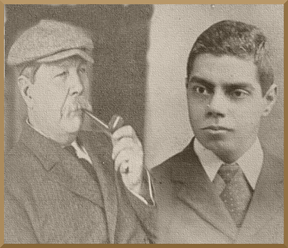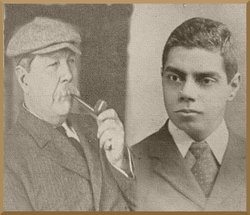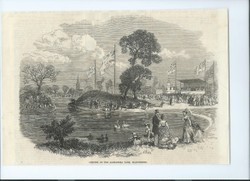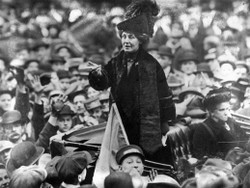April 2nd 1903: Cob belonging to Mr Thomas slashed to death.
May 1903: Two cows belonging to Mrs Bungay slashed to death.
May 1903: (Fortnight after the above) Two sheep belonging to Thomas Green slashed to death; Mr Badger's horse also slashed to death on the same day.
June 6th 1903: Two cows slashed to death.
Late June 1903: (Three weeks after the above) Two horses belonging to Quinton Colliery slashed to death.
July 1903: Letter arrives addressed to Mr Rowley at Bridgtown Police Station stating that the horse maimer will be bringing a hook on a specific train from Walsall. Asks for a £100 reward to be published before any more details are forthcoming.
July 10th 1903: Letter arrives at Hednesford Police Station bearing a Walsall postmark. It named George Edalji as the person committing the Great Wyrley horse maiming, plus stated that 'they start on little girls, for they will do twenty wenches like the horse before next March'.
August 4th 1903: Postcard sent from Wolverhampton, purportedly from George Edalji and mirroring his handwriting, sent to George Edalji's office. It graphically described his supposed sexual relations with a young lady and told him to get back to 'writing on walls' and 'maiming cows'. George and his sister were in Aberystwyth that day and therefore could not have posted it from Wolverhampton.
August 18th 1903: Pit pony belonging to Great Wyrley Colliery found by Henry Garrett (miner) dying in a pool of blood at 6.20am. At 8am, police arrested George Edalji for the Great Wyrley Outrages. They took from the Vicarage a collection of shaving razors and a housecoat. Upon the latter officers insisted there was a horse's hair, but Reverend Edalji maintained it was a loose thread. The coat was later put into a box of evidence along with the horse's hide. It had 26 hairs matching the horse on it by the time a coroner inspected it.
August 27th 1903: Another pony slashed to death, while Edalji was still in custody.
September 4th 1903: George Edalji formally charged with the Great Wyrley Outrages and committed to Staffordshire Quarter Sessions for a full trial. He was offered bail but refused it, because 'when the next horse is killed it will not be by me'. This was later used against him, as it was said to imply he was part of a gang committing the mutilations. In the meantime, Edalji was taken to Stafford Gaol.
September 25th 1903: Chestnut horse - belonging to Harry Green (19 year old son of farmer Thomas Green - see May 1903), High House Farm, Great Wyrley - was slashed. It galloped 100 yards away before dying. Harry later signed a confession stating that he'd killed his own horse (it had been injured in Yeomanry training, hence was put down albeit brutally). He was not prosecuted. A couple of weeks later, having procured a ticket to South Africa, Harry recanted his confession, saying that the police had bullied him into signing it.
October 20th 1903: George Edalji's trial begins at Stafford Quarter Sessions. Harry Green is present, as he had been subpoenaed to the trial by the prosecution - who never called him - which meant that the defense could not do likewise
October 24th 1903: George Edalji sentenced to seven years imprisonment with hard labor for the Great Wyrley Outrages. Harry Green leaves immediately for South Africa.
November 3rd 1903: Horse and mare in the same field killed. A newborn foal had been cut from the mare and was dumped a little further on. All belonged to Mr Stanley of Landywood Farm.
November 1903: George Edalji moved to Lewes Prison in Sussex to avoid contact with his 'associates'. He would serve his sentence forthwith in Lewes, then Portland, both far from Wyrley and his family.
November 1903: A petition decrying Edalji's sentence is presented to the Home Office and Chief Constable Anson. It had been signed by 10,000 people from Wyrley and the vicinity. A private gentlemen named Mr Yelverton writes the covering letter explaining that none of the undersigned believe that justice has been done.
November 8th 1903: Chief Constable Anson writes to the Home Office stating that even Reverend Edalji doesn't believe that his son is innocent, and any further investigation would be 'a simple waste of time'. The Home Office believes him.
February 8th 1904: A horse mutilated but not killed.
March 24th 1904: Two sheep and a lamb had their throats cut. Naturally they died.
March 1904: Miner named Farrington arrested for the sheep maiming and sentenced to three years' imprisonment.
1905: A journalist for Truth publication visits Great Wyrley. A report then appears in print suggesting that racism had played a part in George Edalji's conviction. The editor of Truth contacts Henry Labouchère MP with all of that information.
1905: Henry Labouchère MP submits a statement to the Home Office about the unsound nature of George Edalji's conviction.
October 6th 1905: Home Secretary Aretas Akers-Douglas, 1st Viscount Chilston, considered the case and stated that he believed the investigation was faultless. (He didn't actually mention that Chief Constable George Anson, who headed said investigation, was his cousin.) However Akers-Douglas concurred that the sentence was too harsh, when Farrington only got three years. George Edalji was subsequently released.
1906: Sir Arthur Conan Doyle and Susan Moriarty spend eight months in Great Wyrley researching the Wyrley animal maiming, specifically the role played by George Edalji. They find the locals hostile to their investigation, so have to live outside the town. Police Officer Needham - who had been part of the original team deployed to this case and was uneasy about the Edalji conviction - put them up in his Rushall home.
January 1907: Sir Arthur Conan Doyle publishes The Case of Mr George Edalji. It demonstrates why - in his opinion - George was innocent and highlights several flaws in the investigation of the whole Wyrley outrages.








 It's hard to find a starting point in the story of George Edalji. To come in anywhere is to state a position from the outset, tempering the tale thereon.
It's hard to find a starting point in the story of George Edalji. To come in anywhere is to state a position from the outset, tempering the tale thereon.








 St Tydecho's Churches in West Waleson 09/03/2014
St Tydecho's Churches in West Waleson 09/03/2014
 Goodies for an Outlander Premiere Partyon 03/06/2015
Goodies for an Outlander Premiere Partyon 03/06/2015
 Holocaust Memorial Day Interview with Rainer Höss, Grandson of Rudolf Architect of Auschwitzon 01/24/2015
Holocaust Memorial Day Interview with Rainer Höss, Grandson of Rudolf Architect of Auschwitzon 01/24/2015
 Romantic Valentine Gifts for an Outlander Fanon 01/16/2015
Romantic Valentine Gifts for an Outlander Fanon 01/16/2015



Comments
There is that. I'm also brought to mind the fact that people like Ian Brady began with animals, which was regrettable enough, then moved onto people. It's difficult to examine the mentality, when we're not 100% certain who it was.
C.S. Lewis suggests that evil can be a means of boosting the ego at the expense of another, in this case innocent creatures. When the self-centred ego is harming a person or animal his ego is gratified, as he feels a sense of power. He is gratified by leading the police on a wild goose chase. This kind of evil differs from the evil done by the robber, who seeks a good goal in a wrong way. Animal maiming like this is evil for its own sake, the worst kind.
There was a lot of talk at the time of it being some kind of foreign Black Magic ritual, because Rev Edalji was a Parsi, who converted to Christianity. But in reality you'd find nothing like this in India, particularly in regard to the cattle maiming. Yet the Midlands has a long history of it. I can't really comment more on that (is this a first?), as I've not properly looked into it. The Great Wyrley Outrages certainly weren't unique in that signature animal maiming.
I think we have a few things going on here - Enoch Knowles admitting later than he sent letters, over a course of 25 years, to anyone whose name in the newspaper caught his attention (trolling basically); the maiming, which could well have been a power thing; the police wanting to convict someone, anyone, because they were looking idiotic; and the bog standard bullying of George Edalji, in which racism certainly had a part. But personally I think it was more to do with the fact that he was a middle class kid, traveling every day to a posh school, then training to be a lawyer, in the midst of a rural mining village.
I'd love to know who did the maiming part too. Arthur Conan Doyle pointed the finger at the Sharp brothers, particularly Royden Sharp, who'd trained as a butcher. Conan Doyle was going to put that into print, but the Home Office warned him not to. Nevertheless, his description was easily recognizable in Wyrley, regardless of names omitted. Royden Sharp sent him a death threat, saying he was going to take out his liver and kidney.
Back in the distant past, I was talking to a great niece of Farrington. She said her family had been blighted by the association for decades (this was the 1980s). She claimed her great-uncle's innocence. Conan Doyle also pointed out that Farrington was convicted on equally circumstantial evidence, but he was only a miner, not the son of a landed gentry lady and her reverend husband, so Farrington didn't get a world famous writer taking up his case. It seems that the people of Wyrley suspected Farrington for quite some time.
Everything about this seems kind of... completely random. Killing animals, and then apparently writing letters trying to blame another person. ...But why? It'd be interesting to know who was actually guilty just to potentially have a bit of their motivation for this. I mean, serial type murders in general are kind of senseless, but the reasoning can usually be traced in their psychology, no matter how messed up. I'm guessing it was probably just for the thrill of it, but it is still really just an odd crime a town had to deal with.
The crimes have always struck me as particularly cowardly too.
There is no acceptable crime, but a thief or murderer usually has a reason for his crime. These crimes are senseless and agains poor animals - a form of terrorism.